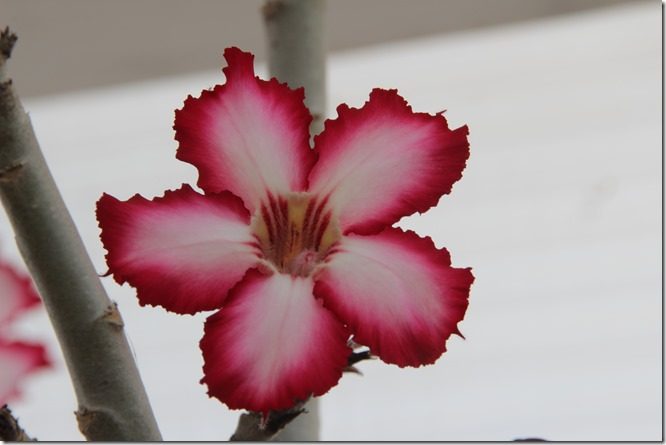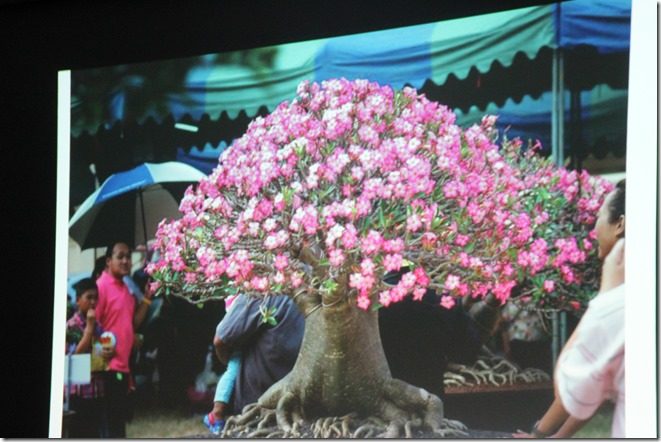Adenium obesum, commonly called the desert rose, is a native to the warm climates of sub-Sahara, eastern and southern Africa, Arabia, and Socotra, so I shouldn’t be surprised when my adeniums drop their leaves every winter. Even though I have talked to you about these plants in blogs before, this will be a little different look at them. They don’t look very pretty right now.
And yet, look at this stunning flower one of them gave me just the other day!
The plant lost all its leaves with the onset of winter, which happens in cold weather even though it spends its winters inside. This one is in the greenhouse and looks pretty sad, despite the pretty flowers.
This one in the barn looks even sadder as it has not produced any flowers or leaves yet.
I seldom get leaves and flowers at the same time, so I am still learning about these plants. But pictured below is the same plant in the summer of 2017 with leaves, just to show you how they look when they do have leaves. I have repotted this one, well, both of them, to show more of the caudex and fat roots, the preferred look for adeniums. The caudex is where they store their water.
Adenium hybrids are extremely popular in Japan, and they do amazing things with the treatment of the roots. Plants are uprooted, trimmed, and repotted every four to six months to get the desired growth. The branches are also trimmed to shape the desired canopy. These pictures were shared with us at the 2018 Mid-States Cactus Conference in St. Louis, Missouri, by Tracy Vymola in her presentation on adeniums.
I am not that dedicated to the process, obviously, but I have been working with them more since seeing all these exotic plants. I was one of the lucky ones to be sent home from the Mid-States Conference with a baby adenium arabicum to work with, and it is time to repot it again. But it has already made new leaves this year; it was just as bare as my other two but has already burst forth with leaves. It is not old enough to bloom yet, but I can’t wait to see what those flowers will look like.
Here it is from the other side.
In the early days, I rotted a couple of specimens from overwatering in the winter. But I have learned my lesson and leave them considerably drier in the cold winter months, even though the temptation is to water when they start losing their leaves. Let them do their thing, and the leaves and flowers will magically appear when you least expect it.
So I will leave you with a few blooms to make you want to go right out and buy an adenium yourself.
If you are interested in this succulent, check out my earlier posts on adeniums:
Trimming from Top to Bottom, July 25, 2017,
Tracy Vymola and her Love of Adeniums, November 6, 2018 .
This post shows adeniums and other succulents that also have fat caudexes:
More Fat Plants, November 23, 2014.











Recent Comments